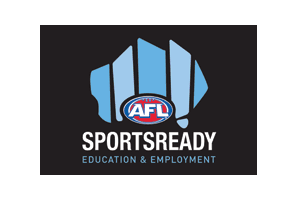A couple of weeks ago I took part in another AFL Sportsready course run by Austin Stubbs from AFLHP, this time looking at game plans.
Earlier this year I took part in a skill acquisition course that I posted about here.
It consisted of pre and post-course reading and questions, 2 x 2 hour Zoom calls and we also had a mid course pre-Grand Final analysis call with the AFL season finishing when it did right in the middle of the course.
Austin doesn't leave many stones untouched and completely fills the 2 hours so it's handy that they record the Zoom call video so you can go back to it later if you miss something.
The course was filled with elite level coaches from a just retired AFL premiership player, AFLW assistant coaches, VFL coaches and even some data analysis people who have ridiculous insight into how the game is played.
Me not having actually coached a team yet would have been the most inexperienced coach there by a long shot but I'll hopefully put all this coaching content to use in 2021.
I have 14 pages of typed up notes from this course so I've basically randomly chosen 10 points for this 2 part series with the first 5 coming below.
#1 - DRILL DESIGN
I won't let this go until you do but the sooner you can get rid of cone to cone drills the better and as I've said in the past it's bordering on pure laziness to stick with them in my opinion.
They only look at the offensive part of the game but how are games won these days?
Defensively.
To combat this, create drills that present a problem for the players to solve both offensively and defensively to enhance learning.
By creating game simulated action via scenarios and small sided games it more represents a game situation thus exposing your players to more game action which exposes them to more problems to solve which forces them to find more solutions to solve them - just like games.
#2 - STRATEGY v TACTICS
Strategy enhances decision making by aligning players to work together to solve a problem and they compliment high skill and increase the chances of winning over skills alone.
Examples of strategy are fast v slow play, defensive press, offensive fast play on, contest shape, stoppage structure and set plays for kick ins.
They are reliable and are used every in every quarter of football.
Tactics are "actions" such as opposition tag, bench rotations and player positioning but unlike strategy you might not use them all the time.
You won't beat good opposition with tactics but you will with strategy
#3 - LIST ANALYSIS
- What do you have?
- What do you have a lot of?
- What are your strengths?
- What don't you have a lot of?
- What do you need?
- What are your weaknesses?
Build your game plan around your top 20% and what they provide then try and surround them with what they need to carry that out.
#4 - PHILOSOPHY
Defensive skills are easier than offensive skills to build as a lot of them don't rely on high skill level.
The difference between good and bad clubs is the ability to score and having the best strategy to do that which will result in deeper and better shots on goal.
Speed disrupts defenses and repeat speed is the hardest physical thing to perform so you can wear the opposition defenders out through using it.
#5 - MY NOTES AFTER CALL 1
- Gegenpressing is a soccer tactic used to great effect in AFL in recent seasons which causes the ball carrier great stress and puts them in complete chaos (I'll post an example in the training drills section in the next week).
- Control the opposition and their physical output with your ball movement that can wear them out chasing you around and manning marks.
- A left footed defender should be positioned on the side of the ground that allows them to dispose of the ball according to your game plan/model. So if you want in board kicks then they should be positioned right side of the ground looking at your own goals so they can immediately turn in board and go. Alternatively if you want to play wide then position them on the other side of the ground so they can turn that way far quicker and open up more space for the kick. Vice versa for right footers obviously but lefties are better lets be honest.
- The forward line is the most important aspect of your team defense as the top teams excel at forward pressure and repeat entries.
















